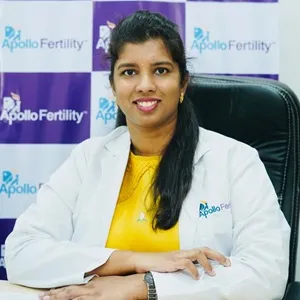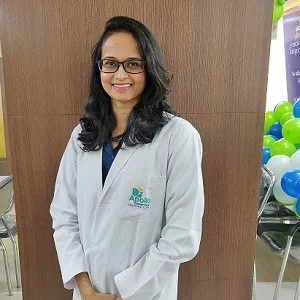In Vitro Fertilization (IVF) Treatment Overview
- A set of intricate treatments known as in-vitro fertilization (IVF) is used to help with infertility treatment, prevent genetic issues, and aid in child conception.
- In IVF, sperm is used to fertilize mature eggs that have been extracted from ovaries in a lab. The fertilized egg then reaches the uterus. This entire procedure takes about three weeks. These processes may occasionally take longer when broken down into independent steps.
- IVF is the assisted reproductive therapy that has had the most success. The process is possible with the use of the couple's own sperm and eggs. IVF treatment procedure may also make use of sperm, eggs, or embryos from known or unidentified donors. It is occasionally necessary to use a gestational carrier, a woman, who has had an embryo implanted.
How is In Vitro Fertilization (IVF) Treatment Perormed?
The steps involved in in-vitro fertilization are listed below:
-
Stimulation
A woman normally produces one egg throughout each menstrual period. However, numerous eggs are needed for IVF. Increased chances of developing a healthy embryo result from using more eggs. Fertility drugs are given to increase the number of eggs. A doctor conducts routine blood tests and ultrasounds throughout this period to monitor the growth of the eggs and decide when to have them removed.
-
Egg Retrieval
The term used for the retrieval of eggs is Follicular aspiration. It is a surgical procedure done under anaesthesia. The doctor uses an ultrasound probe to guide a needle into the follicle that contains eggs in the ovary. Eggs and fluid are suctioned out of each follicle with the needle.
-
Insemination
The male partner is then required to give a sample of semen. A technician mixes the sperm and the eggs in a petri dish.
-
Transfer
When embryos are big enough, they are ready to be placed in the uterus. This often takes place three to five days after fertilization. During an implant process, a catheter is inserted through the cervix, vagina, and into the uterus. The doctor then implants the embryo into the uterus.
-
Embryo Culture
The doctor will keep an eye on the fertilized eggs to make sure they are dividing and developing normally. Currently, genetic condition testing on embryos is an option.
How does IVF Work?
- First, fertility medicines are given to make eggs suitable for fertilisation. The doctor then removes the eggs and combines them with sperm in a lab so that the sperm can fertilize the eggs. The doctor then immediately inserts one or more fertilized eggs (embryos) into the uterus. Pregnancy results when some of the embryos are successfully implanted in the uterine lining.
- IVF is a time-consuming process that takes several months to complete and achieve success. Many women need more than one round of IVF to get pregnant, though treatment occasionally works on the first try.
- IVF can undoubtedly increase the chances of conceiving if a person has fertility problems, but there is no assurance of the procedure being successful because each person's body is different.
When to Visit a Doctor for IVF Treatment?
It is overwhelming to decide whether or not to go in for in-vitro fertilisation if the first attempt fails. This procedure can be tough because of the financial, physical, and emotional costs involved. It is necessary to have a long conversation with a doctor to find out about the best alternatives and whether in-vitro fertilization is the best course of action for the couple and their family. During the IVF process, the couple involved can take the help of a support group or therapist.
Side Effects of In-Vitro Fertilization (IVF)
Listed below are some of the side effects of IVF:
- Bloating
- Cramping
- Breast sensitivity
- Mood changes
- Headaches
- Allergic response to medication
- Bleeding
- Infection
Conclusion
The woman's age, the couple's diagnosis, the sperm quality, and the way the woman's ovaries react to medicine are just a few of the many variables that might affect a couple's likelihood of conceiving a child. Additionally, the in-vitro fertilization cycle's various stages may or may not be effective.
The data, when compared to wealthy nations, indicates that India's average IVF rate is 55%. With a team of skilled doctors, qualified IVF experts, and a knowledgeable team at the top IVF clinic in Hyderabad, success rates could reach 80%.
In Hyderabad, in-vitro fertilisation (IVF) treatments typically cost between Rs. 98,000 to Rs. 1,45,000. Treatment for infertility, avoiding genetic issues, and helping with conception are all achieved with IVF.
This procedure does not hurt. However, in order to soften the cervix before the transfer, patients have to take an oral sedative. Patients may have minor stomach cramps for a day or two following therapy.
In-vitro fertilization (IVF) success rates for women under 35 who are able to get pregnant on the first try nationwide average out to 55%.
IVF has a success rate of around 50% for women under the age of 35. The likelihood of success decreases with age.
Our Doctors
DR. RAMYASREE PARVATHAREDDY
MBBS, MS {OBG}, Fell...
| Experience | : | 12 Years Yeras Experience |
|---|---|---|
| Speciality | : | Infertility/Obstetri... | Location | : | Banjara Hills |
| Timings | : | Mon to Sat : 12:00 P... |
DR. AVANI MANAM
M.B.B.S, M.S(OBGY)...
| Experience | : | 18 Years Yeras Experience |
|---|---|---|
| Speciality | : | Obstetrics & Gynaeco... | Location | : | Kondapur |
| Timings | : | Mon - Sat : 10:30 PM... |
DR. ARADHYA ACHURI
MS, ICOG, FMAS, FIAR...
| Experience | : | 13+ Years Yeras Experience |
|---|---|---|
| Speciality | : | Obstetrics & Gynaeco... | Location | : | Kondapur |
| Timings | : | Mon - Sat : 11:00 AM... |
DR. SUNITHA ILINANI
MBBS, MD (OBG)...
| Experience | : | 23 Years Yeras Experience |
|---|---|---|
| Speciality | : | Obstetrics & Gynaeco... | Location | : | Banjara Hills |
| Timings | : | Mon - Sat : 09:00 AM... |
DR. SUNITHA ILINANI
MBBS, MD (OBG)...
| Experience | : | 23 Years Yeras Experience |
|---|---|---|
| Speciality | : | Sr. Consultant infer... | Location | : | Jubilee Hills |
| Timings | : | Wed : 11:00 AM to 3:... |
DR. MUNAWWER SANA
MBBS, MRCOG (UK),FRM...
| Experience | : | 13 Years Yeras Experience |
|---|---|---|
| Speciality | : | Fertility Specialist... | Location | : | Banjara Hills |
| Timings | : | Mon to Sat : 01:00 P... |
DR. SHRUTI ADUMULLA
MBBS, MS (OBG), FRM,...
| Experience | : | 13 Years Yeras Experience |
|---|---|---|
| Speciality | : | Fertility Specialist... | Location | : | Banjara Hills |
| Timings | : | Mon to Sat : 12:00 P... |






